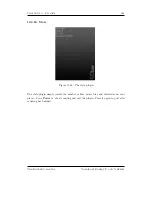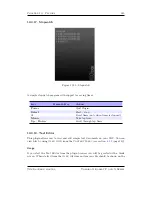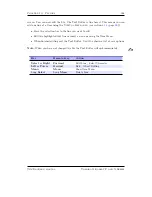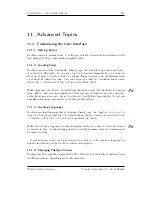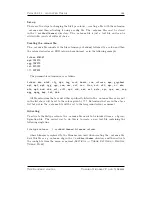
Chapter 11.
Advanced Topics
178
components – for some of those there are settings available.
Another area of savings is
avoiding or reducing CPU boosting through disabling computing intense features (e.g.
sound processing) or using effective audio codecs.
The following provides a short
overview of the most relevant settings and rules of thumb.
11.5.1. Display backlight
The active backlight consumes a lot of power. Therefore choose a setting that disables
the backlight after timeout (for setting
Backlight
see section
8.4
(page
63
)). Avoid to
have the backlight enabled all the time.
11.5.2. Display power-off
Shutting down the display and the display controller saves a reasonable amount of power.
Choose a setting that will put the display to sleep after timeout (for setting
Sleep
see
section
8.4
(page
63
)). Avoid to have the display enabled all the time – even, if the display
is transflective and is readable without backlight. Depending on your player it might be
significantly more efficient to re-enable the display and its backlight for a glimpse a few
times per hour than to keep the display enabled.
11.5.3. Anti-Skip Buffer
Having a large anti-skip buffer tends to use more power, and may reduce your battery
life. It is recommended to always use the lowest possible setting that allows correct and
continuous playback (see section
7.5
(page
55
)).
11.5.4. Replaygain
Replaygain is a post processing that equalises the playback volume of audio files to the
same perceived loudness. This post processing applies a factor to each single PCM sample
and is therefore consuming additional CPU time. If you want to achieve some (minor)
savings in runtime, switch this feature off (see section
7.9
(page
57
)).
11.5.5. Audio format and bitrate
In general the fastest decoding audio format will be the best in terms of battery runtime
on your player. An overview of different codec’s performance on different players can be
found at
Z
CodecPerformanceComparison
.
Your target uses a hard disk which consumes a large amount of power while spinning
– up to several hundred mA. The less often the hard disk needs to spin up for buffering
and the shorter the buffering duration is, the lower is the power consumption. Therefore
the bitrate of the audio files does have an impact on the battery runtime as well. Lower
bitrate audio files will result in longer battery runtime.
The Rockbox manual
Toshiba Gigabeat F and X Series

